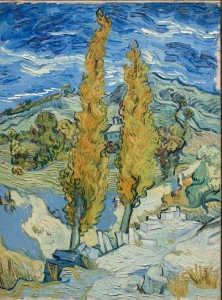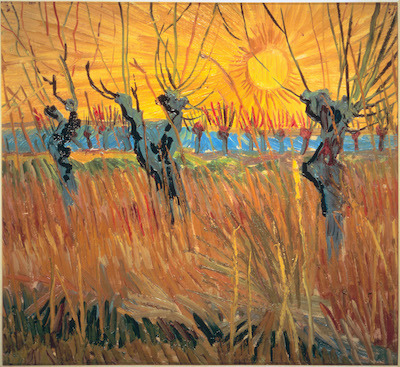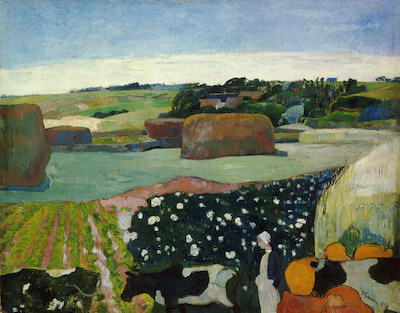Take our advice: don’t waste any time grabbing tickets to see LACMA’s new show, Expressionism in Germany and France: From Van Gogh to Kandinsky, which is only in town through September 14, 2014. The Resnick Pavilion is filled to the brim with colorful scenes of the European countryside and luscious interiors from San Remy to Dresden, evidence of European painters grappling with the revolutionary ideas bursting from the easels of Southern France. Immersing yourself in these cheerful, ground-breaking canvases is a promising way to start the summer of 2014.
Here’s where you can get tickets – and you will definitely need timed entry passes to see what is sure to be a blockbuster exhibit. For the first time in a major museum exhibition, Expressionism is presented not as a distinctly German style but as an international movement in which artists in Germany and France responded with various aesthetic approaches to modern masters such as Vincent van Gogh, Paul Cézanne, and Paul Gauguin, among others. Over 40 artists—including Wassily Kandinsky, Emil Nolde, Gabrielle Münter, Franz Marc, Henri Matisse, Robert Delaunay, and Pierre Bonnard—are represented in over 90 paintings and 45 works on paper, in addition to approximately 30 ephemera objects.
This is a show that everyone from elementary school-aged kids to grandparents will enjoy; the canvases are incredibly colorful, the subject matter is accessible (there are several nudes, however), and the balance of the familiar and the new is audience-friendly. Adults will enjoy cruising around the gallery space because it is filled with canvases by well-known painters but intriguingly, the paintings on display are ones not normally seen. What’s better than to discover a new image by a favorite painter? The pleasant balm of the familiar is accompanied by the experience of learning about a new image, and then about a new artist who was influenced by Van Gogh or Matisse — because the show’s mission is to demonstrate how one group of painters influenced the next.
The show is arranged to demonstrate how the German painters became familiar with and were influenced by work coming out of French painters such as Van Gogh, Cezanne, Gauguin and Matisse. We particularly loved Gauguin’s Haystacks in Brittany (above) and a couple of extraordinary Henri Rousseau canvases alongside paintings from artists from the Brücke and the Blaue Reiter movements (which eventually became known as German Expressionists) — notably Ernst Ludwig Kirchner and Max Pechstein.
The scholarship that tracks the movement of the paintings themselves from studio to gallery helps us to understand how these artists influenced each other and it’s easy to imagine a bunch of painters attending a gallery show, being blown away by a new work by Van Gogh, and heading home to try something new in their own studios. Ultimately, the flow of paintings and friendship between artists was severed by WW2, and many emigrated to New York – setting the stage for Abstract Expressionism to flourish.
Take a stroll through the Calder show on the way out, as well, and you’ll be reminded of how the whole concept of the Mobile came from Calder’s visit to the studio of Mondrian, and figuring out that he could make Mondrian’s color field paintings airborne. And, it was their colleague Marcel DuChamp who coined the term “mobile”.
Finally, don’t forget to duck into James Turrell’s Ganzfeld room for a complete day of color saturation. (Sign up when you first arrive at the museum for a timed entry ticket to this popular exhibit).




